Email sales@AllianceChemical.com for 24/7 Expert Support
-
512-365-6838
-
Hydrogen Peroxide 6% Technical Grade
Category : Bases
$16.19
Liquid error (snippets/product-blocks line 100): divided by 0
Off
Unit price
/
Shipping Notice: Possible Hazmat Fees
💡 Smart Shipping Tip: Quart & Liter Sizes Often Avoid Hazmat Fees
This size may be classified as hazmat and can incur additional carrier fees. See shipping guide
- ✅ Good news: 1 Quart containers qualify as "Limited Quantity" and bypass hazmat rules
- 💡 Pro tip: Order multiple 1 Quart containers to avoid hazmat fees entirely
- 💰 Hazmat fees can get expensive - especially for larger containers (carrier charges, not our markup)
- 🚚 Ground shipping only - no expedited options for sizes over 1 Qt/1L
Required by 49 CFR § 173.150 for chemical containers larger than 1 quart. Actual fees shown at checkout. View our complete shipping guide →
✅ Great Choice! No Hazmat Fees
1 Quart containers qualify as "Limited Quantity" and avoid hazmat shipping fees.
- 🚀 Faster shipping: Eligible for expedited shipping options including air transport
- 💰 No hazmat fees: Ships as "Limited Quantity" per DOT regulations
- 📦 Convenient size: Perfect for testing or smaller applications
- ♻️ Smart choice: Order multiple quarts to get the volume you need without hazmat charges
Exempted under 49 CFR § 173.150 Limited Quantity provisions for containers ≤1 liter/quart. Learn more in our shipping guide →
Quantity
Size:
Variation:
-
$16.19Delivery every$15.38
-
$17.92Delivery every$17.02
-
$19.83Delivery every$18.84
-
$20.92Delivery every$19.87
-
$23.06Delivery every$21.91
-
$29.94Delivery every$28.44
-
$46.80Delivery every$44.46
-
$1,430.84Delivery every$1,359.30
-
$89.52Delivery every$85.04
-
$340.05Delivery every$323.05
-
$2,169.99Delivery every$2,061.49
-
$187.97Delivery every$178.57
-
$399.50Delivery every$379.53
-
$1,079.40Delivery every$1,025.43
-
$1,122.86Delivery every$1,066.72
-
$1,280.06Delivery every$1,216.06
$16.19
Liquid error (snippets/product-sticky-blocks line 69): divided by 0
Off
Unit price
/

Hydrogen Peroxide 6% Technical Grade
$16.19
Liquid error (snippets/sticky-product line 56): divided by 0
Off
Unit price
/
Size:
Variation:
-
$16.19Delivery every$15.38
-
$17.92Delivery every$17.02
-
$19.83Delivery every$18.84
-
$20.92Delivery every$19.87
-
$23.06Delivery every$21.91
-
$29.94Delivery every$28.44
-
$46.80Delivery every$44.46
-
$1,430.84Delivery every$1,359.30
-
$89.52Delivery every$85.04
-
$340.05Delivery every$323.05
-
$2,169.99Delivery every$2,061.49
-
$187.97Delivery every$178.57
-
$399.50Delivery every$379.53
-
$1,079.40Delivery every$1,025.43
-
$1,122.86Delivery every$1,066.72
-
$1,280.06Delivery every$1,216.06
Ask a question
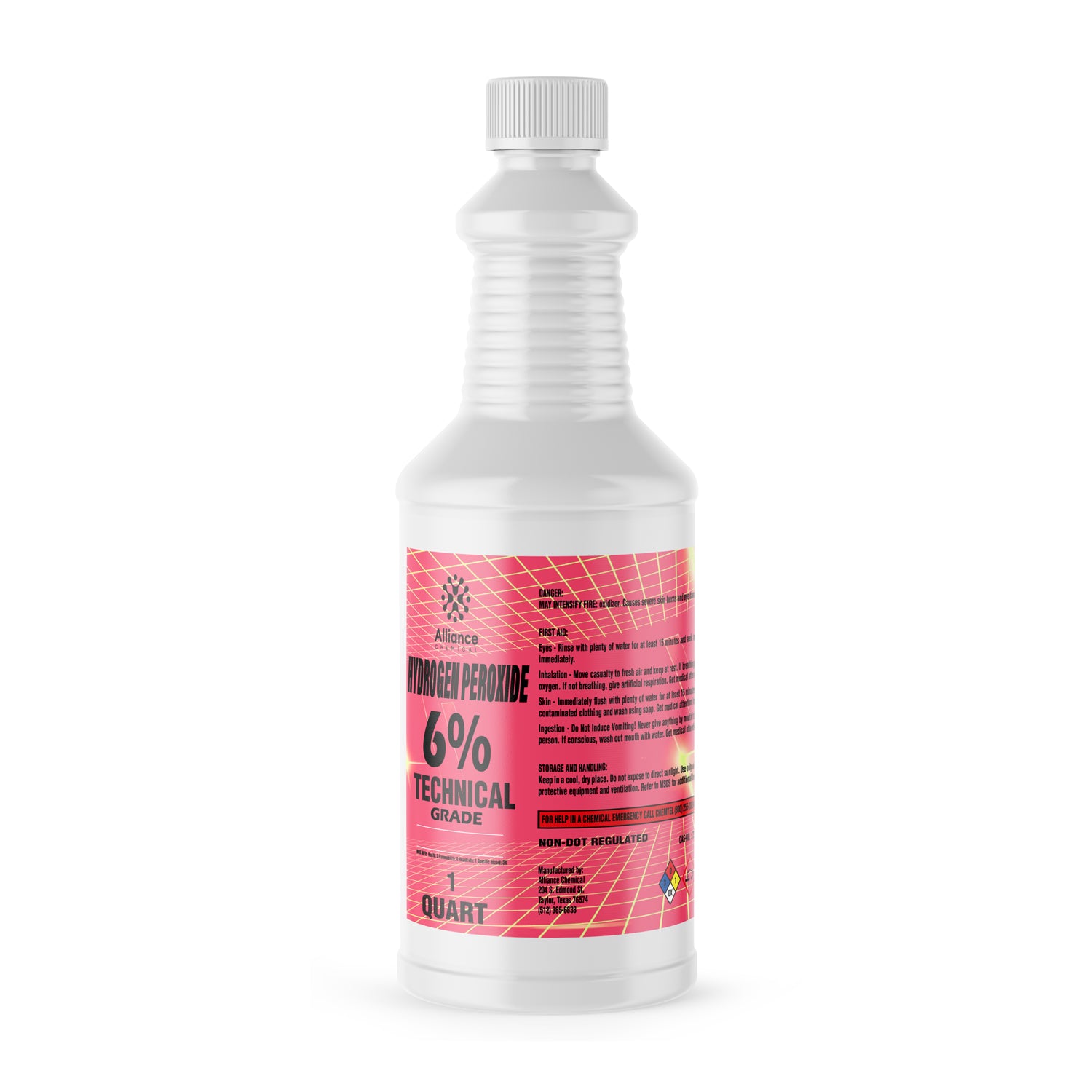
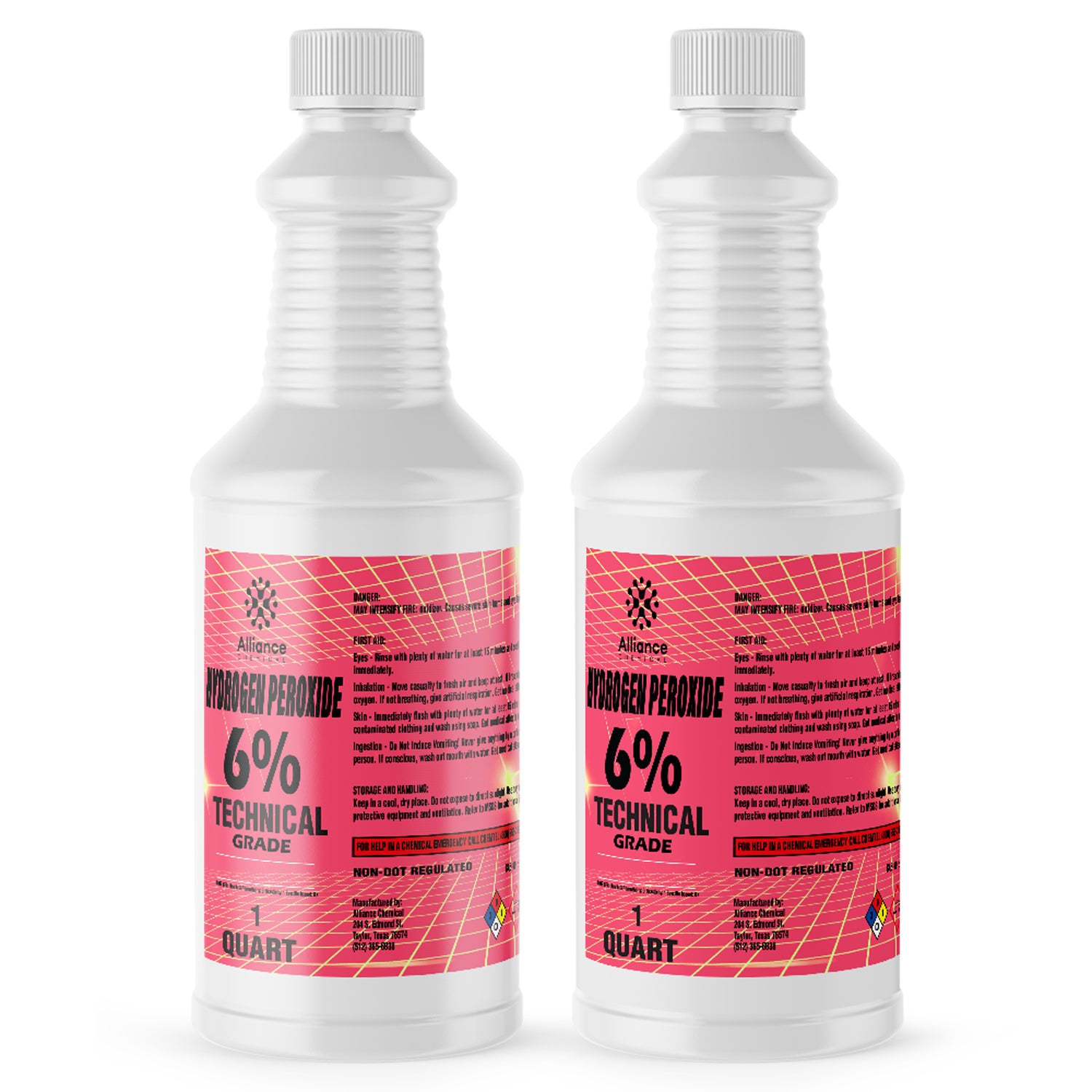
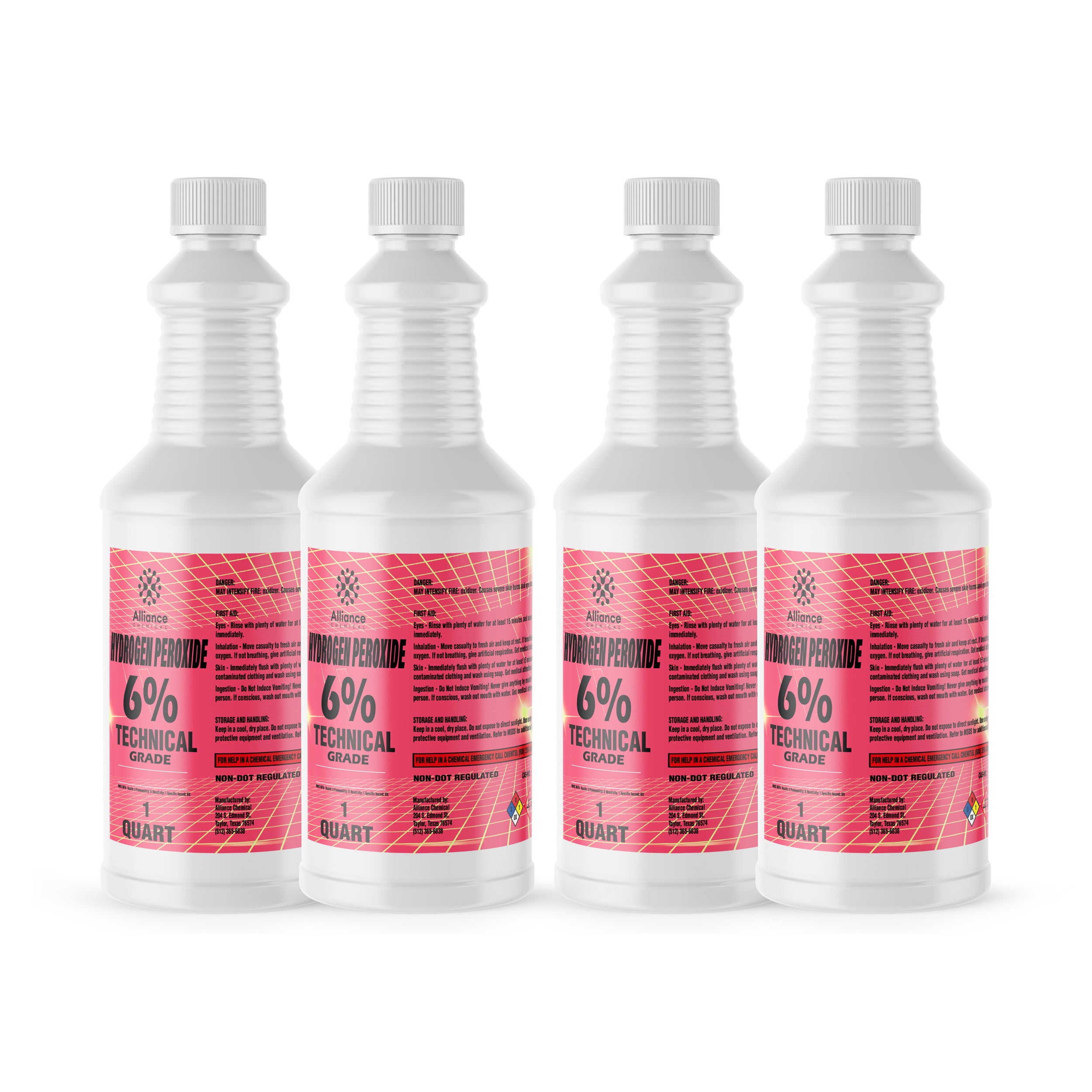
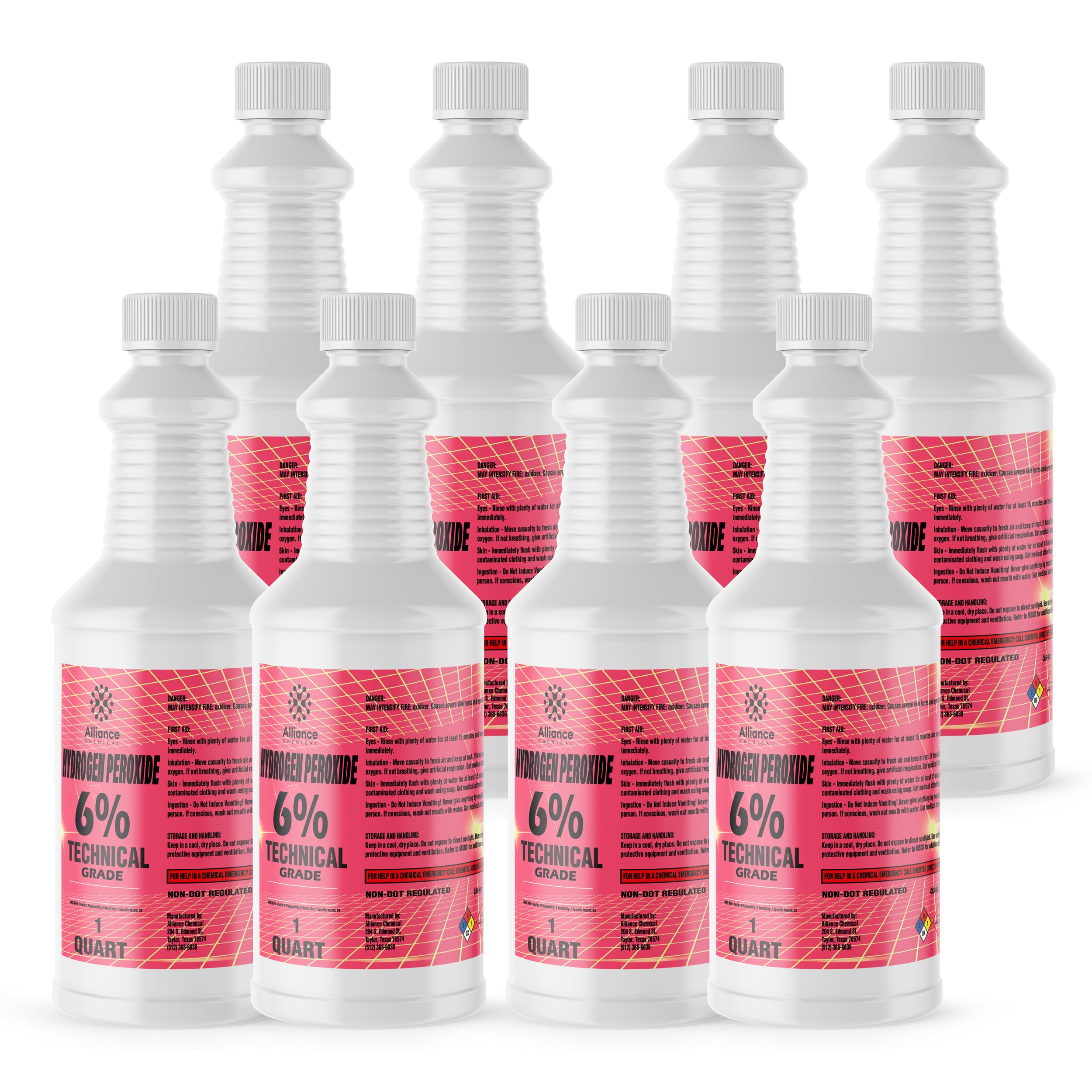
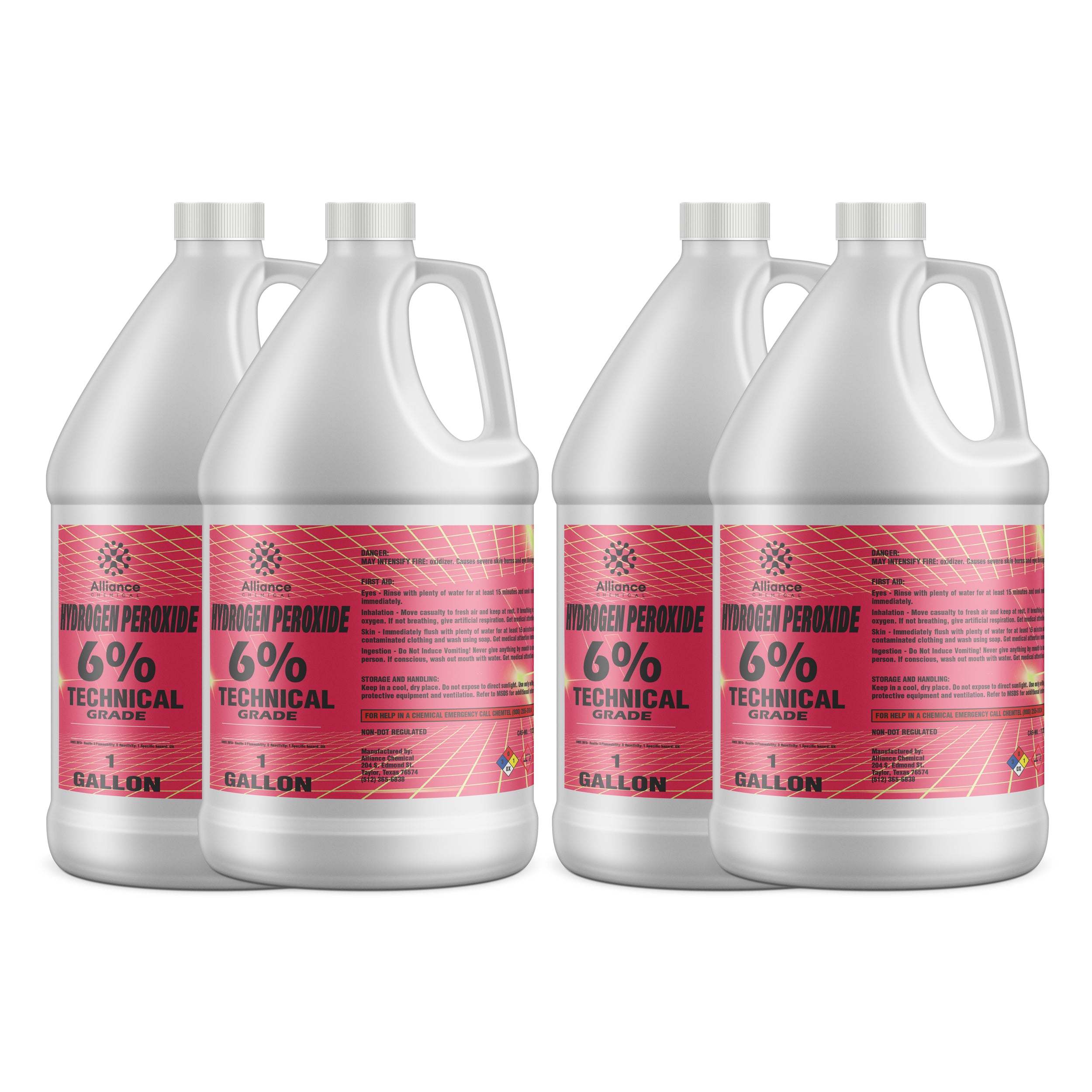
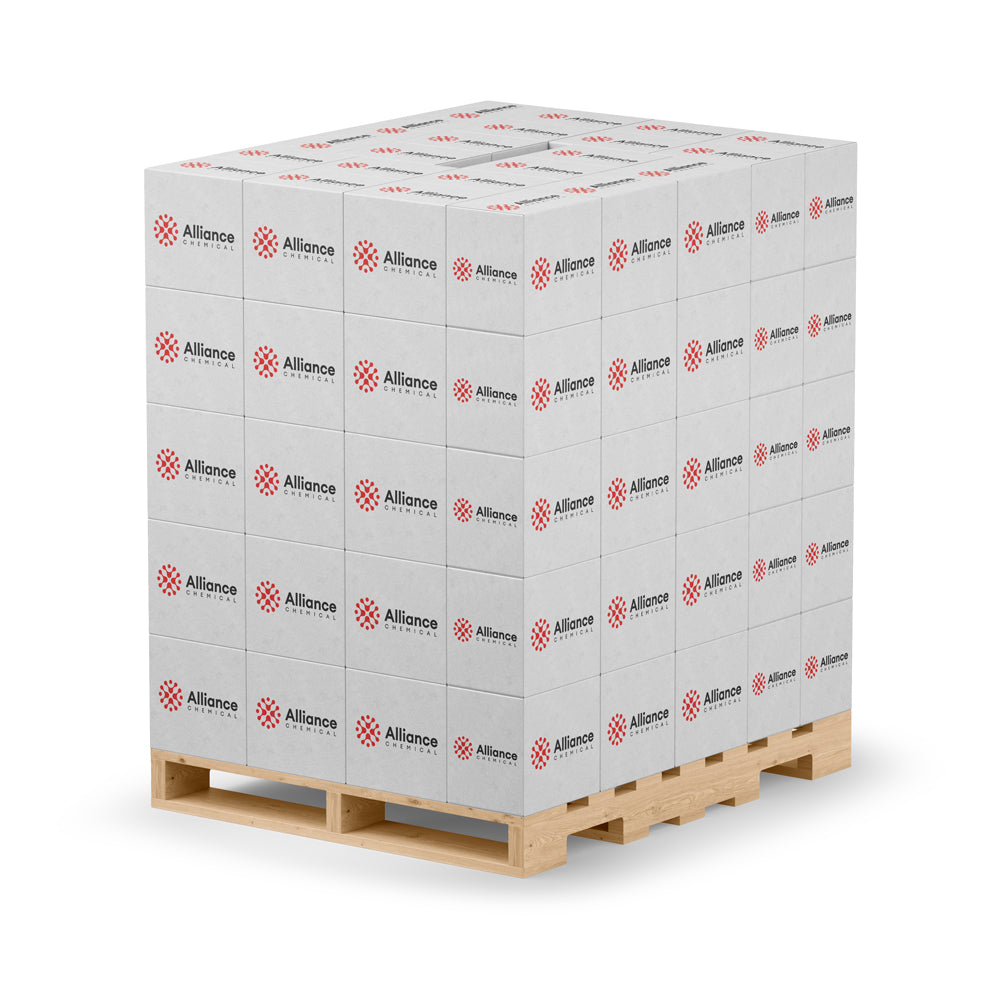
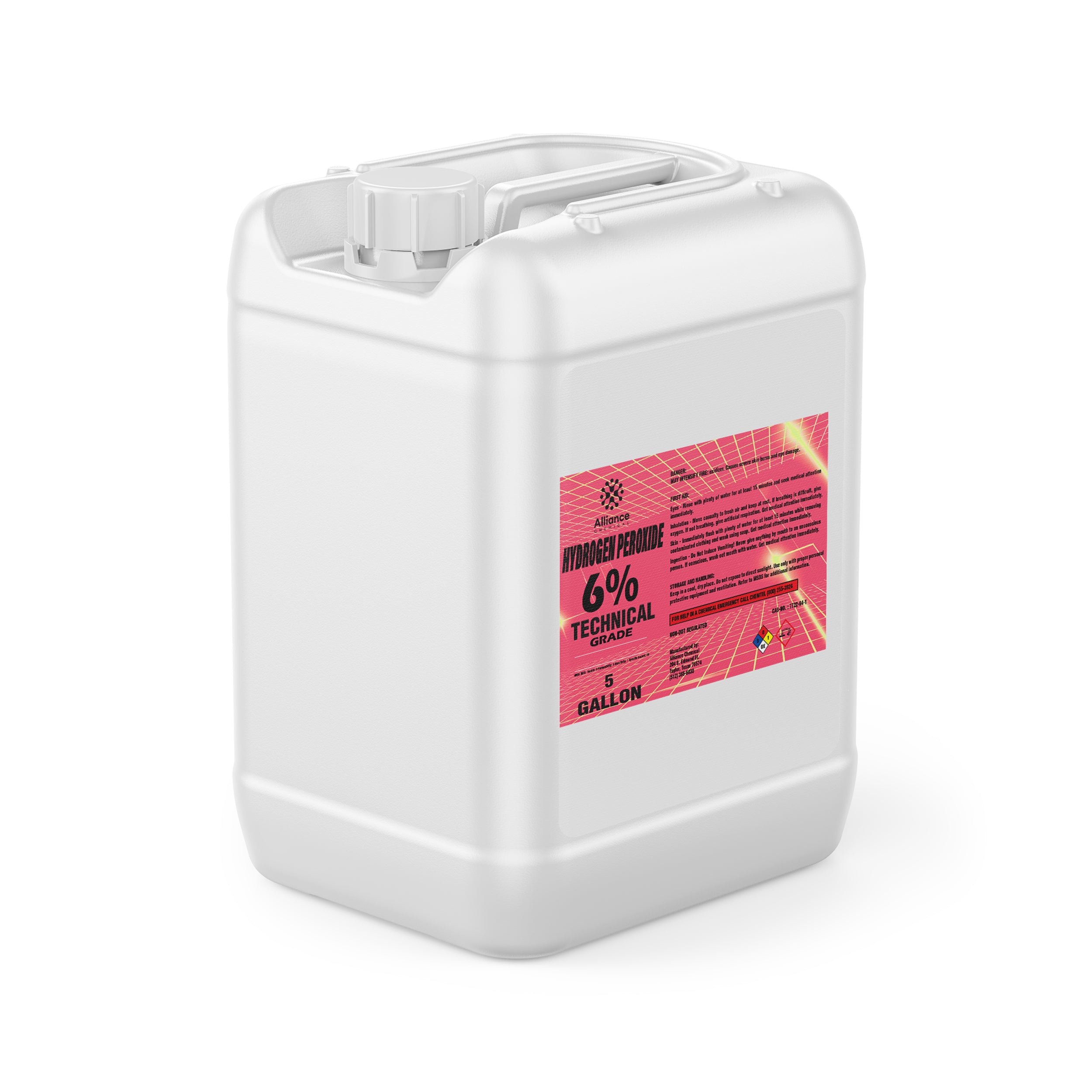
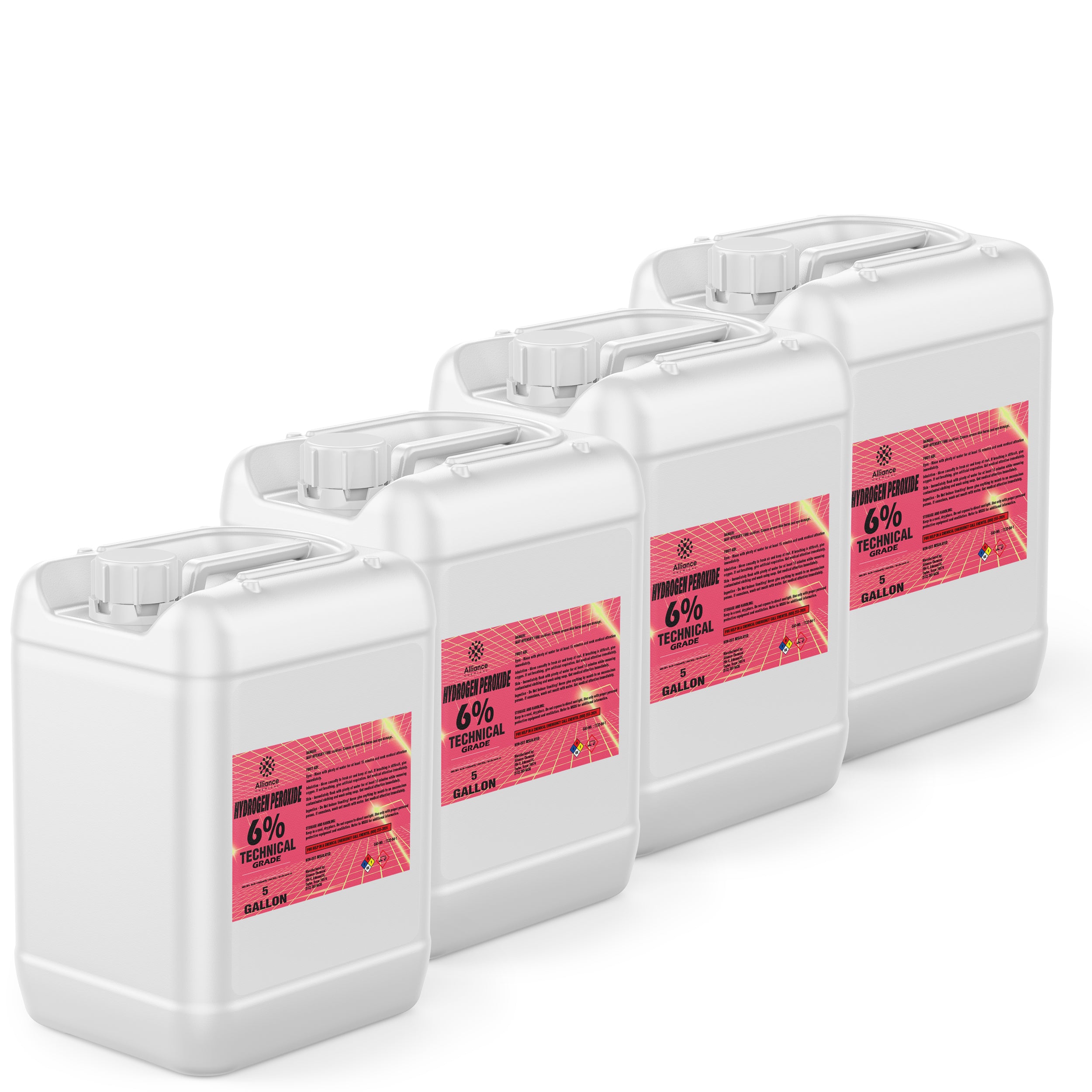
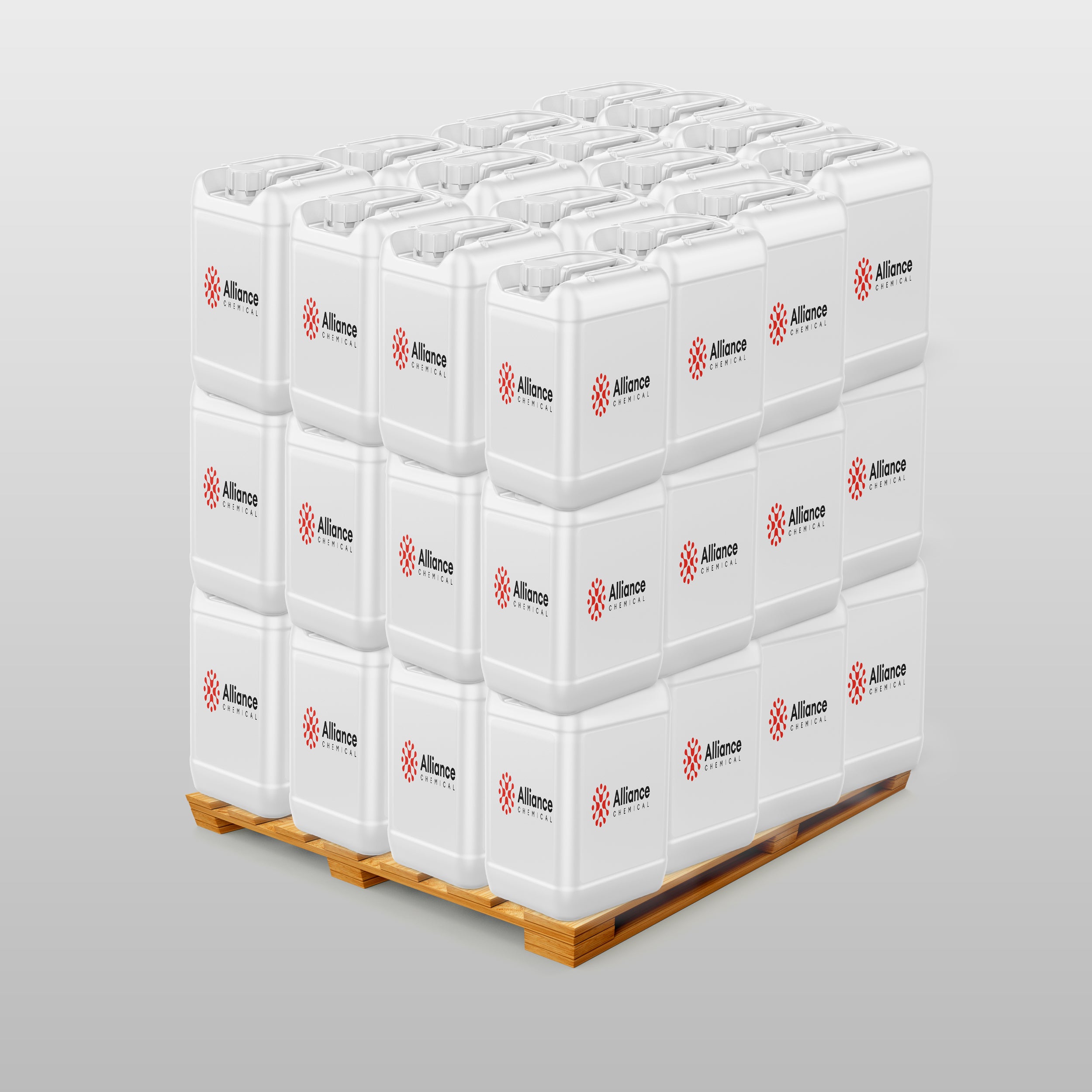

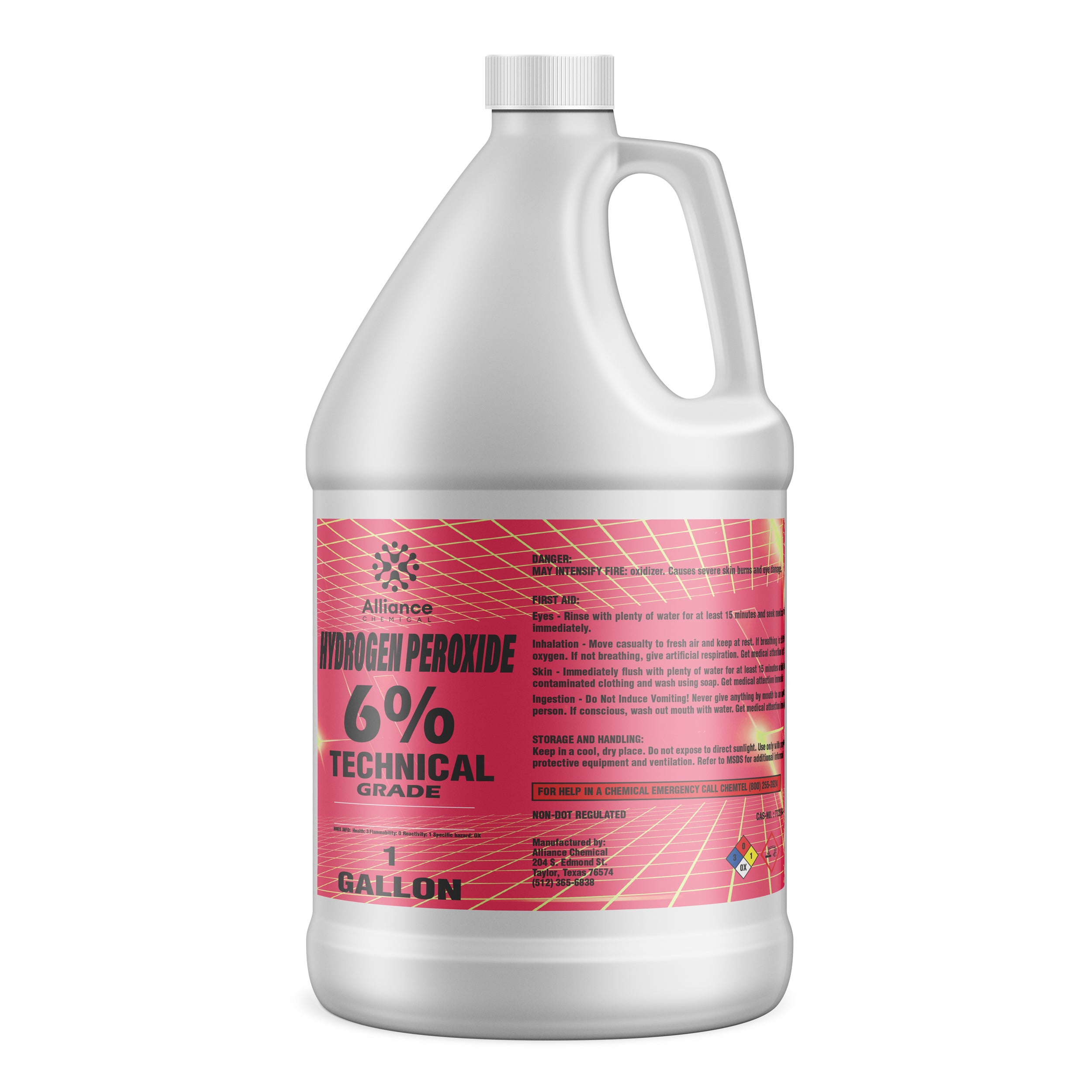
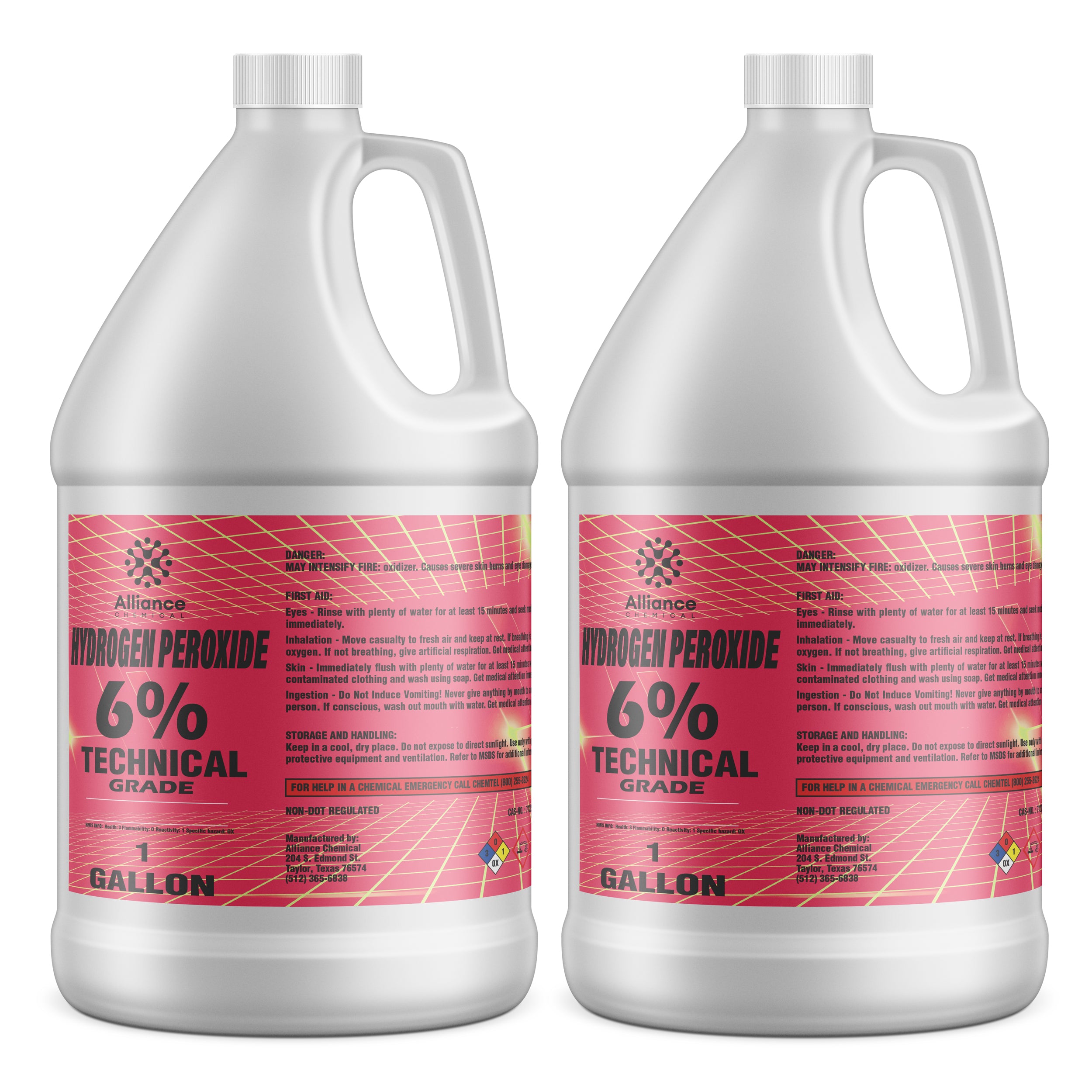
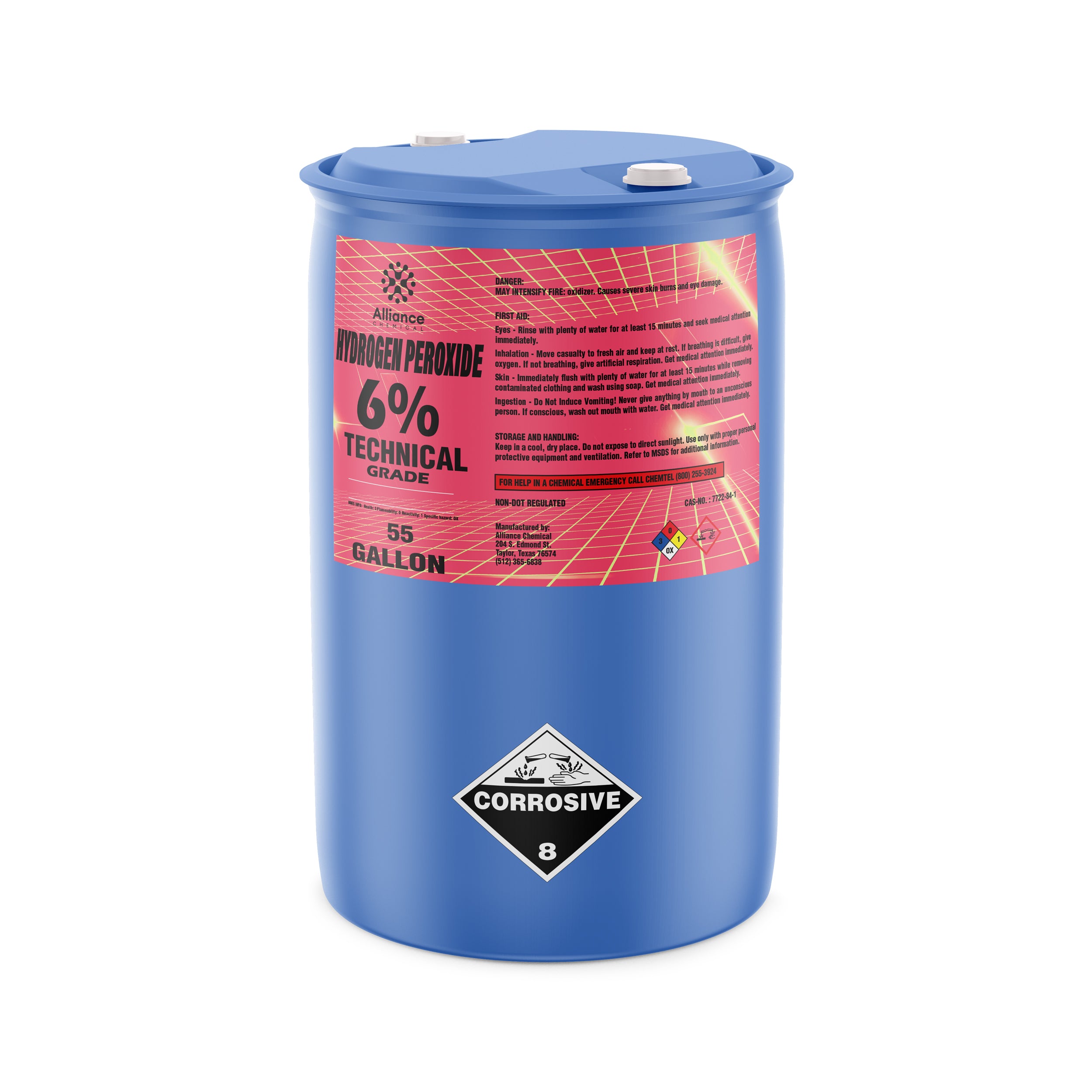
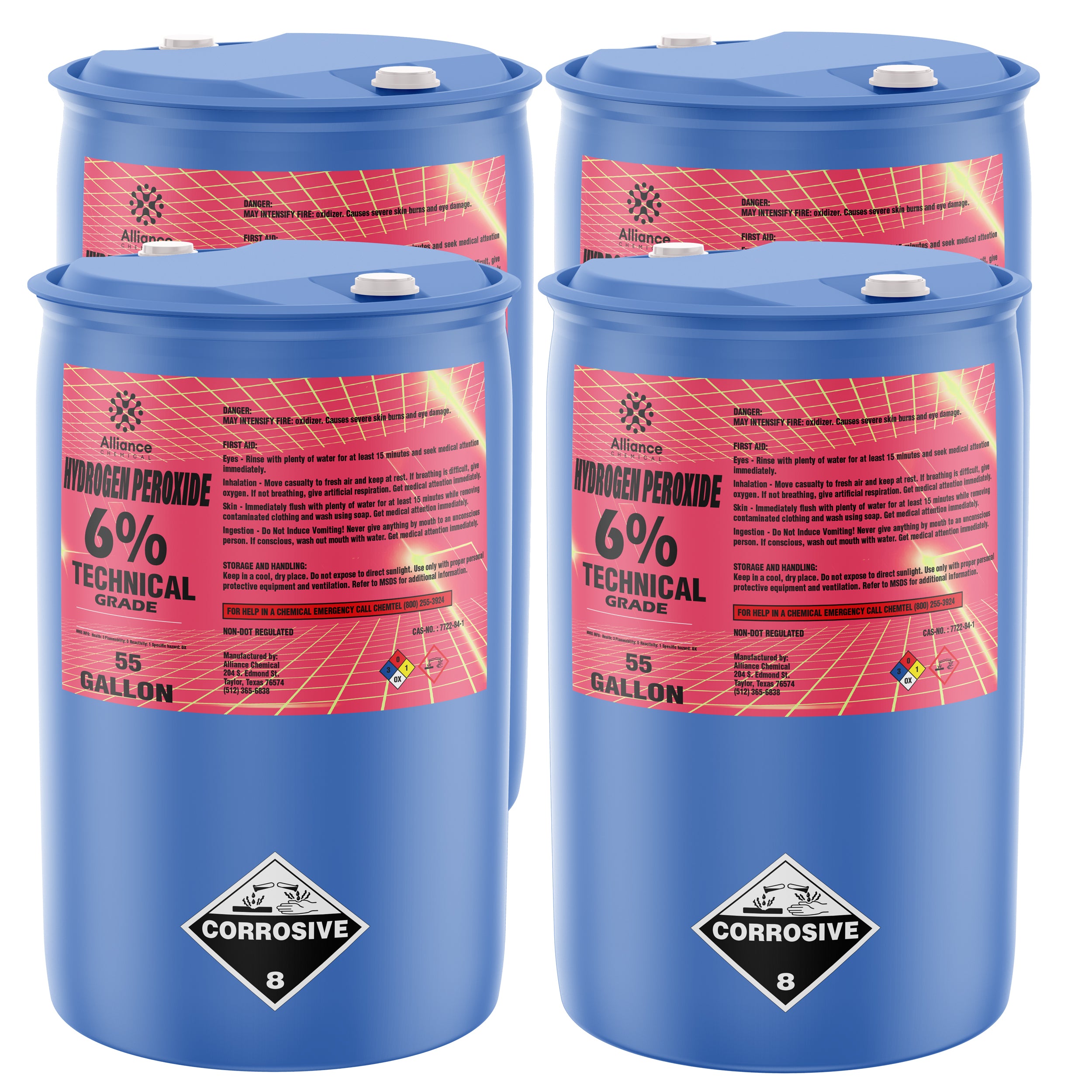
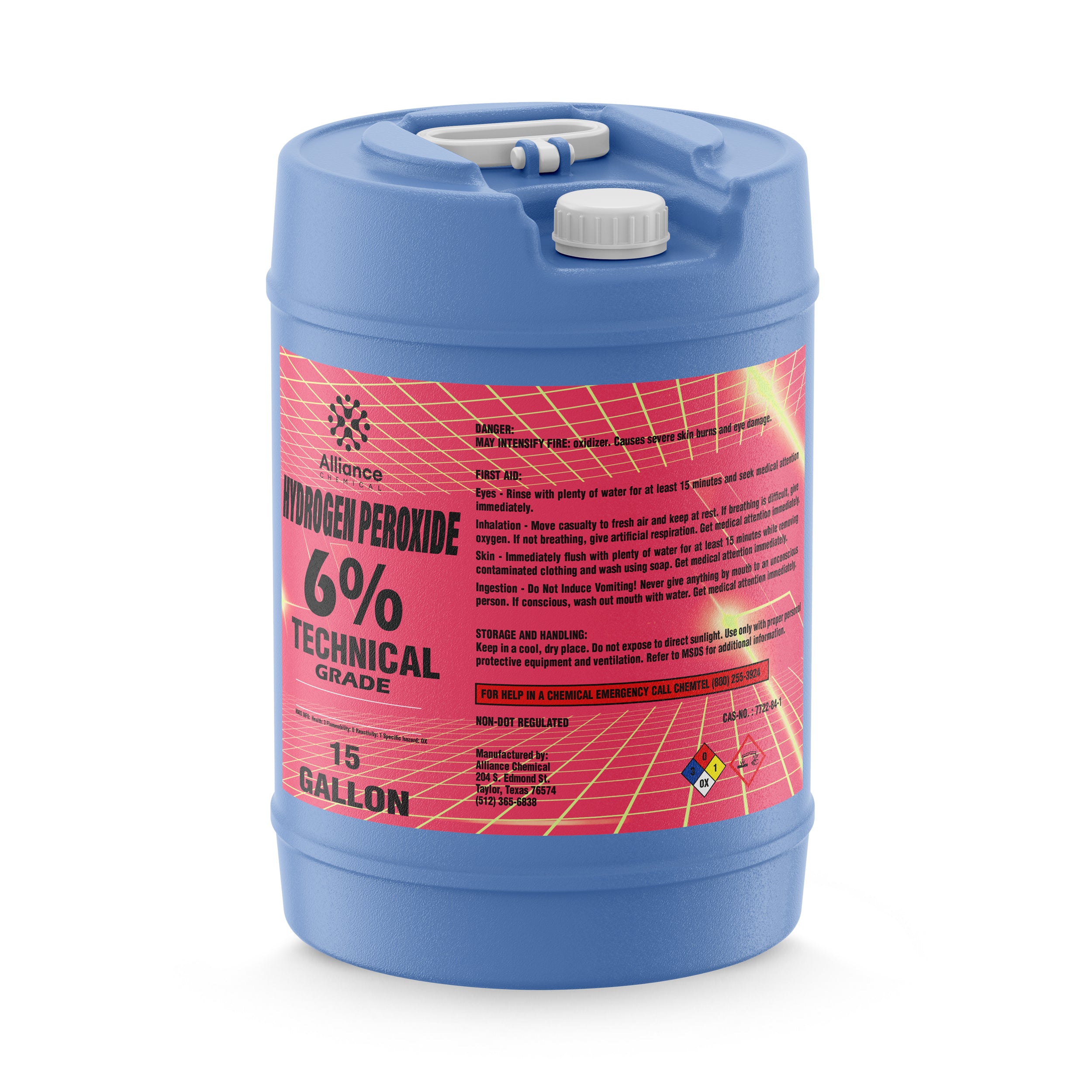
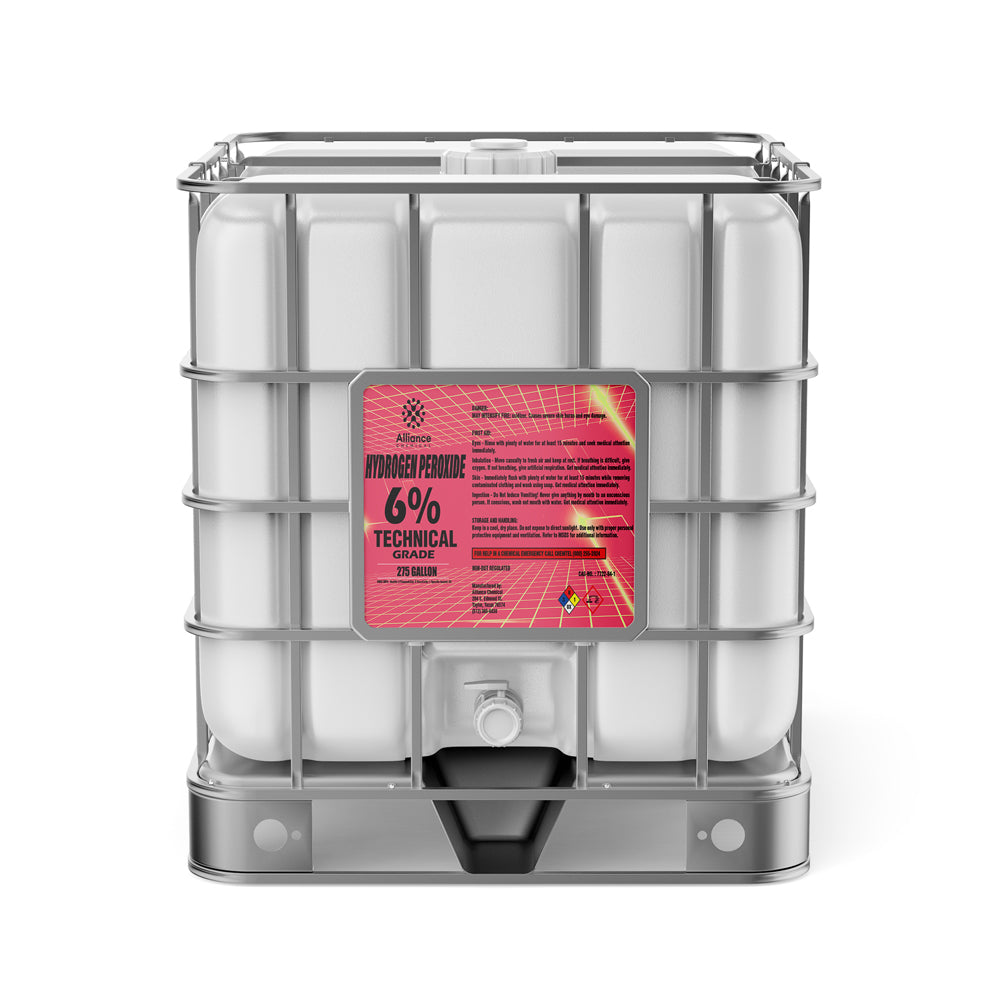

- Description
- Product Documents
Product Overview
Hydrogen Peroxide 6% Technical Grade is a clear, colorless liquid solution formulated for industrial applications requiring a reliable oxidizing agent. Commonly referred to as H2O2 or peroxide, this solution decomposes into water and oxygen, providing a clean reaction profile favorable for environmental compliance. This 6% concentration offers a balance of oxidizing power and handling safety, making it suitable for chemical synthesis, textile bleaching, and wastewater treatment processes.
Engineered for consistency, this Technical Grade product maintains controlled impurity levels to support reproducible results in manufacturing and laboratory settings. It serves as a vital reagent where moderate oxidation is required without the aggressive reactivity of higher concentrations. Strict quality control measures ensure the assay remains within specification (5.5–6.5%), ensuring batch-to-batch uniformity for process engineers and purchasing agents.
Key Properties
- Appearance: Clear, colorless liquid
- Chemical Formula: H₂O₂
- Molecular Weight: 34.01 g/mol
- Boiling Point: 151.2°C
- Specific Gravity (20°C): 1.01–1.02 (typical 1.015)
- Assay (wt%): 5.5–6.5% (typical 6%)
- Residue After Ignition: max 0.05%
- Heavy Metals (as Pb): max 0.1 ppm
- Chloride: max 20 ppm
- Sulfate: max 5 ppm
- Solubility: Miscible in water
Common Applications
- Industrial Oxidation: Functions as a strong oxidant in chemical manufacturing and synthesis workflows, facilitating selective oxidation reactions with minimal byproduct formation.
- Water Treatment: Utilized in wastewater processing for the oxidation of organic contaminants, odor control, and dechlorination, offering a lower-impact alternative to chlorine-based treatments.
- Bleaching Operations: Essential in the pulp, paper, and textile industries for whitening fibers and removing colorants without damaging substrate integrity.
- Surface Preparation: Used in metal finishing and cleaning protocols to prepare surfaces by oxidizing organic residues prior to coating or plating.
- Laboratory Reagent: Serves as a standard oxidant in analytical chemistry for redox titrations and sample digestion procedures.
Safety Precautions
Hydrogen Peroxide 6% is a strong oxidizer and must be handled with care. Personnel should wear appropriate Personal Protective Equipment (PPE), including chemical splash goggles, chemical-resistant gloves, and protective clothing. Ensure workspaces are well-ventilated to prevent vapor accumulation.
Store in a cool, vented area away from direct sunlight, heat sources, and combustible materials. Avoid contact with reducing agents, organic materials, and alkalis. Use only compatible containers (such as HDPE or vented glass) to prevent pressure buildup from decomposition. In the event of a spill, dilute with large amounts of water and follow all local, state, and federal disposal regulations. Refer to the Safety Data Sheet (SDS) for detailed emergency response and transport information.
Benefits
Consistent Assay: Tightly controlled 6% concentration for predictable reaction kinetics.
Clean Decomposition: Breaks down into water and oxygen, minimizing hazardous waste streams.
Versatile Packaging: Available in sizes ranging from 1 Quart to 330 Gallon totes to suit scale.
Technical Purity: Low metal and anion impurities to prevent catalytic decomposition.
Related Products
| Property | Value |
|---|---|
| Molecular Weight | 34.01 g/mol |
| Formula | H2O2 |
| Assay | 6% |
| Grade | Technical |
| Form | Liquid |
| Solubility | Fully miscible with water |
| Appearance | Transparent, pale blue liquid |
| Melting Point | -0.43 °C |
| Boiling Point | 150 °C |
| Specific Gravity | 1.025 |
| Industry | Industrial, Environmental, Chemical Processing, Research |
Other top rated products

















FRG-SJ5-Y8G
$16.19
Liquid error (snippets/product-blocks line 100): divided by 0
Off
Unit price
/
Shipping Notice: Possible Hazmat Fees
💡 Smart Shipping Tip: Quart & Liter Sizes Often Avoid Hazmat Fees
This size may be classified as hazmat and can incur additional carrier fees. See shipping guide
- ✅ Good news: 1 Quart containers qualify as "Limited Quantity" and bypass hazmat rules
- 💡 Pro tip: Order multiple 1 Quart containers to avoid hazmat fees entirely
- 💰 Hazmat fees can get expensive - especially for larger containers (carrier charges, not our markup)
- 🚚 Ground shipping only - no expedited options for sizes over 1 Qt/1L
Required by 49 CFR § 173.150 for chemical containers larger than 1 quart. Actual fees shown at checkout. View our complete shipping guide →
✅ Great Choice! No Hazmat Fees
1 Quart containers qualify as "Limited Quantity" and avoid hazmat shipping fees.
- 🚀 Faster shipping: Eligible for expedited shipping options including air transport
- 💰 No hazmat fees: Ships as "Limited Quantity" per DOT regulations
- 📦 Convenient size: Perfect for testing or smaller applications
- ♻️ Smart choice: Order multiple quarts to get the volume you need without hazmat charges
Exempted under 49 CFR § 173.150 Limited Quantity provisions for containers ≤1 liter/quart. Learn more in our shipping guide →
Size:
Variation:
-
$16.19Delivery every$15.38
-
$17.92Delivery every$17.02
-
$19.83Delivery every$18.84
-
$20.92Delivery every$19.87
-
$23.06Delivery every$21.91
-
$29.94Delivery every$28.44
-
$46.80Delivery every$44.46
-
$1,430.84Delivery every$1,359.30
-
$89.52Delivery every$85.04
-
$340.05Delivery every$323.05
-
$2,169.99Delivery every$2,061.49
-
$187.97Delivery every$178.57
-
$399.50Delivery every$379.53
-
$1,079.40Delivery every$1,025.43
-
$1,122.86Delivery every$1,066.72
-
$1,280.06Delivery every$1,216.06
Compare Products
| Price |
|---|
| SKU |
| Rating |
| Discount |
| Vendor |
| Tags |
| Weight |
| Stock |
| Short Description |
